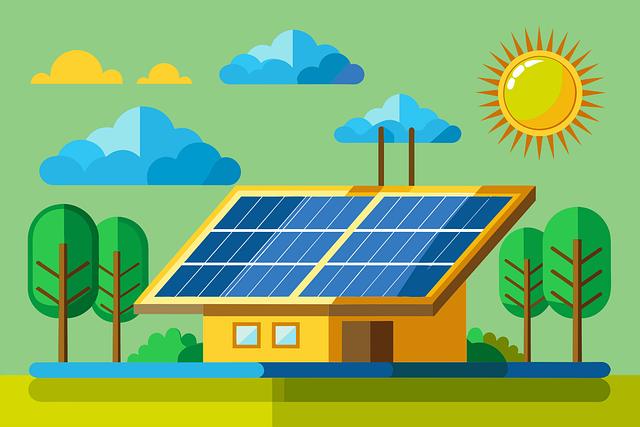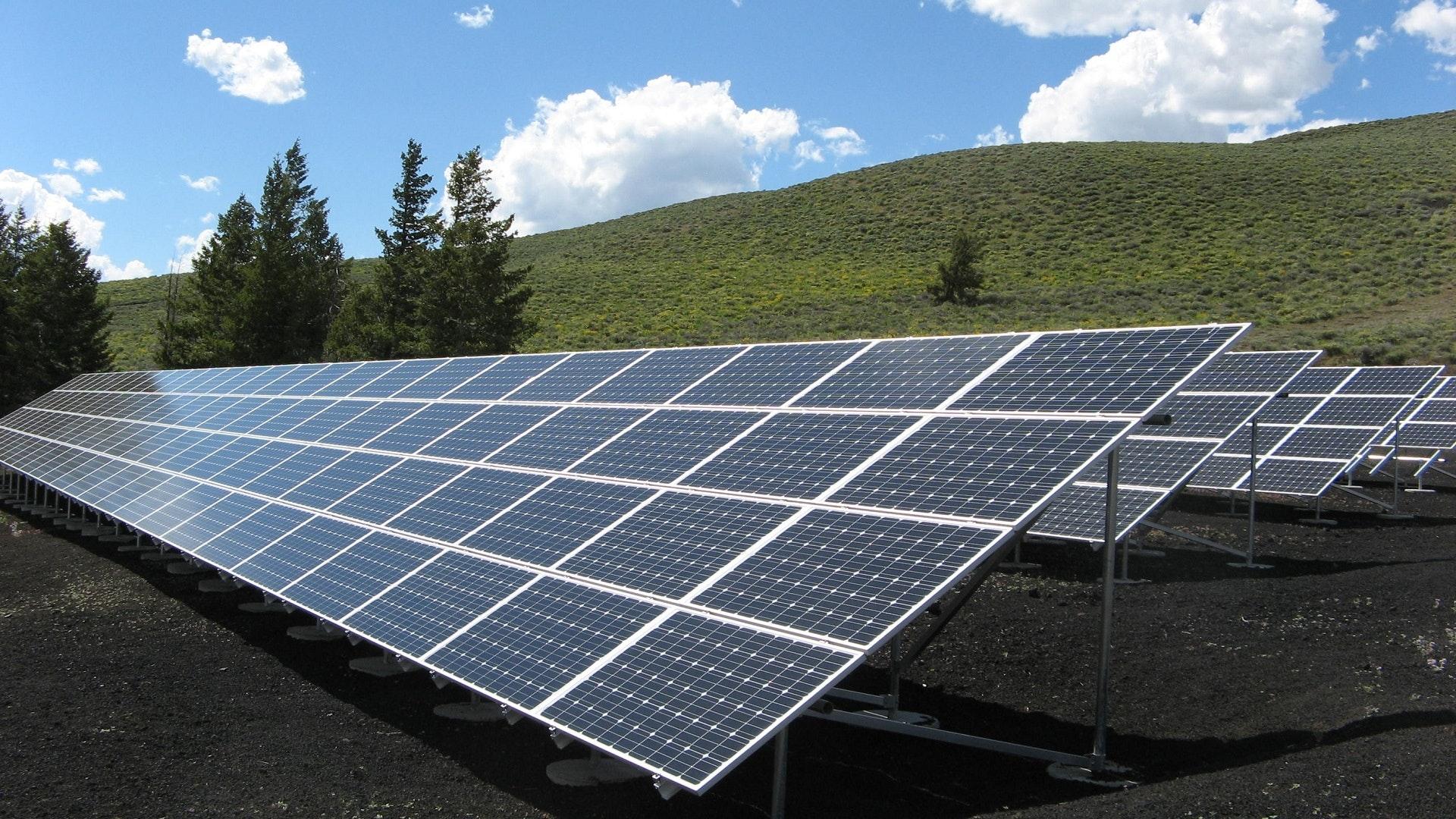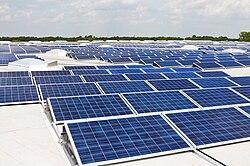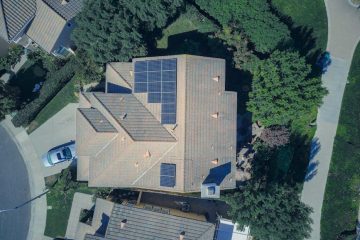Table of Contents
- Understanding the Benefits of Solar Power for Homeowners
- Key Factors to Consider Before Installing Solar Panels
- Financing Options and Incentives for Going Solar
- Maximizing Energy Efficiency with Solar Technology
- Maintenance Tips to Ensure Longevity of Your Solar System
- Q&A
- In Conclusion


Understanding the Benefits of Solar Power for Homeowners
One of the most significant advantages of adopting solar energy is the potential for substantial financial savings. Homeowners can significantly reduce their monthly electricity bills by harnessing the sun’s energy. Many states offer incentives and rebates to encourage the installation of solar panels, often making them more affordable. In fact, depending on local policies and sunlight exposure, solar power can lead to savings of up to 80% on yearly energy costs. Further, with net metering, any excess energy generated by your solar panels can be sold back to the grid, providing an additional revenue stream.
Another compelling reason to consider solar power is its positive impact on the environment. By using renewable energy, homeowners contribute to reducing carbon footprints and lessening dependence on fossil fuels. Solar panels generate electricity without emitting harmful greenhouse gases, making them a clean energy source. This shift not only promotes sustainability but also aligns with a growing societal trend towards eco-friendliness. As awareness of climate impacts increases, many homeowners feel a sense of responsibility to invest in greener technologies.
Investing in solar power also enhances a home’s overall value. Research indicates that homes equipped with solar energy systems typically sell for more than their non-solar counterparts, as buyers increasingly prioritize energy-efficient features. A well-installed solar panel system can be seen as a significant asset, appealing to environmentally conscious buyers. Additionally, solar technology has advanced considerably, and many systems come with warranties lasting up to 25 years, ensuring long-term reliability and peace of mind for prospective homeowners looking to invest in energy-efficient living.


Key Factors to Consider Before Installing Solar Panels
When contemplating the installation of solar panels, it’s essential to evaluate a blend of technical, financial, and environmental factors. Assessing your home’s energy consumption is an excellent starting point. Understanding how much energy your household utilizes will inform the size and capacity of the solar system required. You can monitor your utility bills over several months to get an accurate average, which helps in pinpointing the most suitable solar solution.
Moreover, the geographical location of your home significantly influences the efficiency of solar panels. Areas with higher sun exposure yield better energy production. For example, homes situated in southern regions will generally benefit from more sunlight compared to those in northern climates. A detailed analysis of seasonal sunlight and shading from trees or nearby buildings is crucial for understanding prospective energy output.
consider the financial implications of solar installation. This entails not only the upfront costs but also available incentives such as federal tax credits, state rebates, and financing options. Below is a simple table highlighting potential costs versus savings over time:
| Item | Cost | Annual Savings |
|---|---|---|
| Installation Cost | $15,000 | – |
| Federal Tax Credit (26%) | -$3,900 | – |
| Annual Energy Savings | – | $1,500 |
| Payback Period (years) | – | 10 |
By weighing these critical factors, homeowners will be better equipped to make informed decisions about embracing solar energy, ultimately leading to long-term benefits both economically and environmentally.


Financing Options and Incentives for Going Solar
When considering solar power for your home, financing options play a crucial role in making the switch both affordable and accessible. Homeowners can explore various avenues to fund their solar installation, making the transition to renewable energy smoother. Some of the most common financing choices include:
- Solar Loans: These are loans specifically designed for solar installations, often offering lower interest rates than personal loans. Homeowners can choose between secured or unsecured loans based on their financial needs.
- Leasing Options: Leasing allows homeowners to use solar panels without the upfront cost. A third-party company installs the panels, and homeowners pay a monthly fee, often lower than their current electricity bill.
- Power Purchase Agreements (PPAs): Similar to leasing, in a PPA, homeowners pay for the power generated by the solar panels instead of the system itself, locking in lower rates for electricity over time.
Beyond traditional financing methods, numerous incentives can make going solar even more appealing. Homeowners may be eligible for federal, state, or local incentives that can significantly reduce the overall cost of solar installation. Notable incentives include:
- Federal Investment Tax Credit (ITC): This allows homeowners to deduct a significant percentage of the solar system cost from their federal taxes, effectively lowering the financial burden.
- State Rebates: Many states offer additional rebates that can further reduce installation costs. This might include cash rebates or sales tax exemptions that vary by locality.
- Net Metering: This arrangement credits solar homeowners for the excess energy their systems produce, allowing them to offset future energy bills.
For a clearer understanding of potential savings, consider the following table showcasing how different financing methods and incentives can reduce overall costs for a typical solar installation:
| Financing Option | Typical Installation Cost | Initial Outlay After Incentives |
|---|---|---|
| Solar Loan | $20,000 | $14,000 (after ITC) |
| Leasing | $20,000 | $0 (no upfront cost) |
| PPA | $20,000 | $14,000 (after ITC) |
These financial tools and incentives not only reduce the upfront costs but also pave the way for long-term savings on energy bills, making solar an increasingly viable option for homeowners eager to invest in clean energy solutions.
Maximizing Energy Efficiency with Solar Technology
Solar technology offers a powerful way to maximize energy efficiency in residential settings. By harnessing the sun’s natural energy, homeowners can significantly reduce their reliance on conventional energy sources, leading to lower utility bills and a more sustainable lifestyle. Implementing solar panels enables households to generate their own electricity, which not only cuts costs but also minimizes the carbon footprint associated with energy consumption.
One effective method for enhancing energy efficiency with solar solutions is through the use of smart solar inverters. These devices not only convert solar energy into usable electricity but also optimize energy output by adjusting to varying sunlight conditions. When paired with battery storage systems, they allow homeowners to store excess energy generated during the day for use during nighttime or cloudy days, ensuring a consistent power supply. Here are some additional benefits:
- Increased home value: Properties equipped with solar technology often see an appreciation in market value.
- Energy independence: Homeowners can reduce their dependency on the grid and protect themselves against rising energy prices.
- Environmental impact: Using solar energy contributes to reducing greenhouse gas emissions.
To further optimize energy usage, integrating solar water heating systems can complement photovoltaic panels. These systems utilize solar energy to heat water, which is used in daily household activities, cutting down gas and electricity costs associated with traditional water heaters. Below is a comparison of traditional heating methods versus solar heating in terms of efficiency and cost:
| Heating Method | Efficiency (%) | Average Annual Cost ($) |
|---|---|---|
| Traditional Electric Heater | 80 | 1,200 |
| Traditional Gas Heater | 70 | 1,000 |
| Solar Water Heater | 90+ | 300 (after installation) |
Incorporating these cutting-edge technologies allows homeowners not just to enjoy lower energy costs, but also to play a vital role in driving the shift towards renewable energy. As solar technology continues to develop, the potential for increased energy efficiency in homes becomes even more promising, paving the way for an eco-friendly future.


Maintenance Tips to Ensure Longevity of Your Solar System
To keep your solar system operating at peak efficiency, routine maintenance is essential. Regularly check for any debris, such as leaves or dirt, that may accumulate on your solar panels. Dust and grime can significantly reduce their efficiency, so a gentle rinse with water can help to maintain optimal performance. It’s also important to inspect the surrounding area for overgrown vegetation that could cast shadows on the panels throughout the day.
Another crucial aspect of solar system maintenance is monitoring the inverter’s performance. The inverter is the heart of your solar installation, converting the DC electricity generated by the panels into AC electricity for use in your home. Most modern inverters come equipped with monitoring systems that allow you to track their performance via a smartphone app. If you notice any unusual activity, such as drops in energy production, it may be time to consult a professional.
Lastly, consider scheduling a professional inspection at least once a year. A qualified technician can perform a thorough check of the entire system, including wiring, connections, and mounting structures. This proactive approach can help identify any potential issues before they lead to significant downtime or costly repairs. Here are some key points to remember for best practices:
- Clean Panels: Gently rinse with water.
- Inspect Inverter: Regular performance monitoring is essential.
- Annual Inspection: Schedule with a qualified technician.
Q&A
Q&A: Understanding Solar Power for Homes
Q: What is solar power, and how does it work at home? A: Solar power harnesses energy from the sun using photovoltaic (PV) panels installed on your roof or in your yard. These panels convert sunlight into electricity, which can power your home and reduce reliance on traditional energy sources. When sunlight hits the panels, it excites electrons, generating direct current (DC) electricity. This DC is then converted to alternating current (AC) by an inverter, making it suitable for household use.Q: What are the benefits of installing solar panels on my home? A: There are numerous advantages to installing solar panels, including reduced electricity bills, decreased carbon footprint, and increased home value. Additionally, many regions offer tax incentives and rebates for homeowners who invest in solar energy, making it a financially savvy choice in the long run.
Q: Are there any downsides or challenges associated with solar power? A: While solar power is an excellent renewable energy source, it does have some challenges. The upfront installation cost can be significant, though many financing options are available. Efficiency can be affected by weather conditions, and homes in areas with limited sun exposure may not benefit as much. It’s essential to consider your location and energy needs when deciding.
Q: How much maintenance do solar panels require? A: Solar panels are relatively low-maintenance. An annual inspection is recommended to ensure they are clear of debris and functioning properly. Occasionally, cleaning might be necessary to remove dirt or bird droppings that can impact efficiency. Most systems come with warranties that last 20 to 25 years, ensuring long-term reliability.
Q: Can solar power really save me money? A: Yes! Solar panels can significantly reduce your monthly electricity bills by providing a substantial portion of your energy needs. In some cases, homeowners may even receive credit for surplus energy they feed back into the grid. Over time, the savings can offset the initial installation costs, leading to greater financial benefits.
Q: How does solar power impact the environment? A: Solar power is one of the cleanest energy sources available. It helps to reduce greenhouse gas emissions and combat climate change, as it does not produce air pollutants or consume water like fossil fuels. By transitioning to solar energy, homeowners contribute to a more sustainable future.
Q: What is the process for installing solar panels at home? A: The installation process typically involves several steps: an initial consultation to assess your energy needs, a site evaluation to determine the best placement of panels, installation of the PV system, and final inspections. It’s crucial to work with a reputable solar installation company that can guide you through each step.
Q: Are there financing options available for solar panel installation? A: Absolutely! Homeowners can choose from various financing options, including purchasing outright, solar loans, leasing, and power purchase agreements (PPAs). Many states also offer incentives to help reduce the upfront costs, making solar more accessible to a broader audience.
Q: Will I still have power during a blackout with solar panels? A: If your solar system is connected to the grid, it typically won’t provide power during a blackout for safety reasons. However, you can consider installing a solar battery storage system that allows you to store excess energy for use during outages, providing peace of mind in emergency situations.
By addressing these frequently asked questions, we hope to illuminate the path for homeowners considering the switch to solar energy. Understanding solar power’s aspects can lead to informed decisions that benefit both your household and the environment.




0 Comments